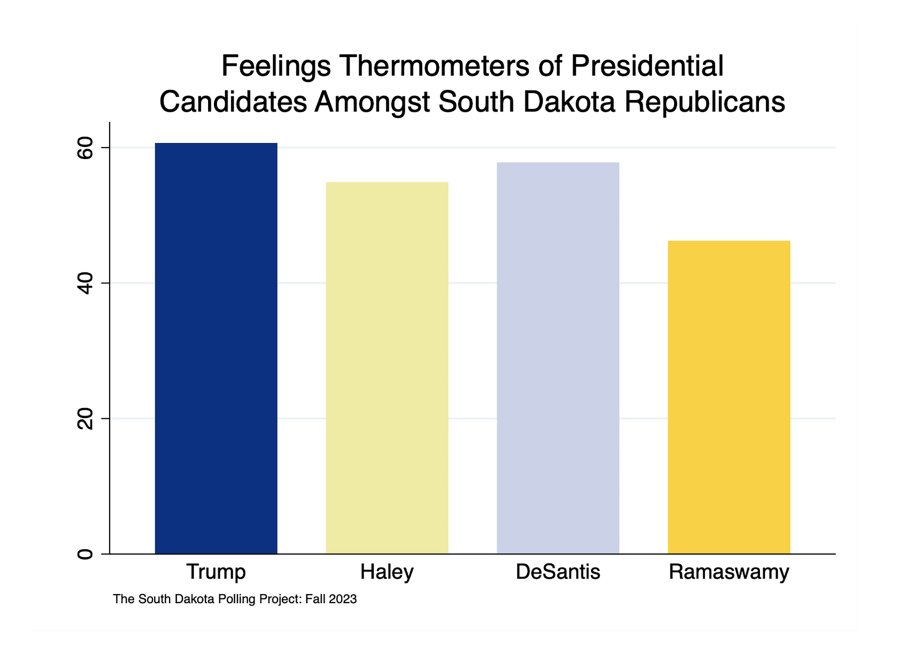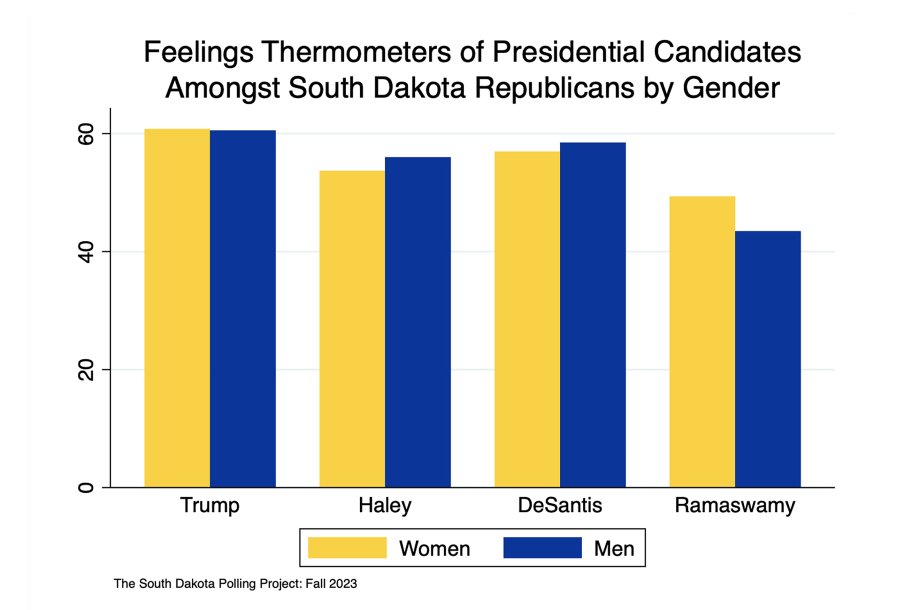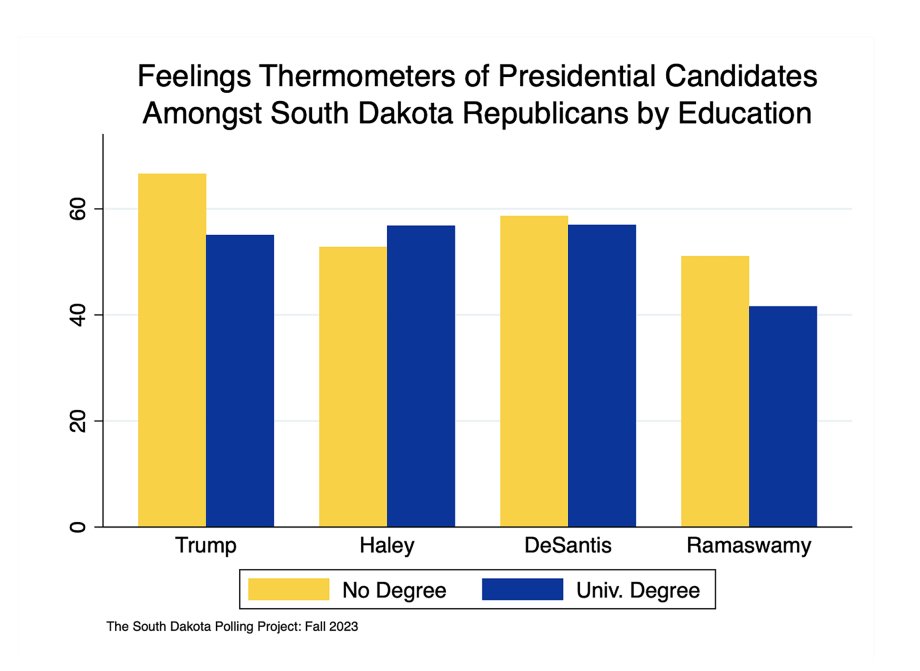By David Wiltse, Ph.D., and Filip Viskupič, Ph.D.
The Fall 2023 Poll, conducted from Nov. 18 to Dec. 4, 2023, is a survey of the South Dakota electorate conducted by The South Dakota Polling Project — a non-partisan research group housed in the School of American and Global Studies at South Dakota State University.
In this poll, 782 registered voters answered questions about political figures and policy questions of concern to South Dakota residents. As with all polls of the electorate conducted by the Polling Project, respondents were randomly sampled from the South Dakota Voter File of all registered voters in the state and weighted the data on known population parameters to closely match the characteristics of the state’s population. The margin of error of this survey was +/- 3.5%, similar to most statewide polls.
Overall feelings on the top four candidates
To gauge the relative popularity of the candidate pool, we used “feelings thermometers” where respondents rate each person on a scale of 0 to 100. Scores above 50 show varying degrees of warm feelings, below 50 show cool feelings, and 50 show neutrality towards the candidate. These scores are quite intuitive and give more precision than a simple approval rating.
Please note that the poll did not ask people who they will vote for in the upcoming primary. This decision was made for a variety of reasons: first, more can be learned about people’s thoughts on any given candidate with this type of scale rather than a simple vote choice; second, the South Dakota primary is still over six months away — vote intentions change; and third, by the time South Dakotans cast ballots in the primary, the nomination will very likely be decided since South Dakota is last in the primary calendar.
At the time of the poll, the “invisible primary” — the period prior to the first caucus and primaries where candidates are vetted by party activists — had winnowed the field considerably with only a handful of candidates showing any viability against Donald Trump. The survey asked about Nikki Haley, Ron DeSantis and Vivek Ramaswamy. The former president had the highest rating of 61. DeSantis followed very closely at 58 (within the margin of error) and Haley third at 55. Newcomer Ramaswamy was the only one on the “cool” side of the field, with a rating of 46.

Gender and education dimensions of candidate popularity
To get a sense of the relative strengths and weaknesses of these candidates, the poll broke down the ratings by population sub-groups. The gender gap is often an important dimension of candidate ratings. However, for the top three candidates, there was no statistically significant difference between men’s and women’s opinions. Though there was a small difference between men and women on Nikki Haley, it was within the poll’s margin of error. However, Ramaswamy’s rating amongst men was relatively low at 43, whereas with women it was nearly neutral at 49.

When educational attainment is considered, sharp differences emerge. Preferences were compared between those with and without a university degree. Both Trump and Ramaswamy had a considerable “education gap” in their appeals in the same direction. Non-college grads rated Trump at 67, whereas college grads rated him at 55. For Ramaswamy, the gap was 51 to 42, with non-college grads slightly on the “warm side” of our measure. The gap was working in the opposite direction for Haley with a rating of 57 for grads and 54 for non-grads – just meeting the threshold of statistical significance. DeSantis saw no statistically discernable difference between college grads and non-grads.


